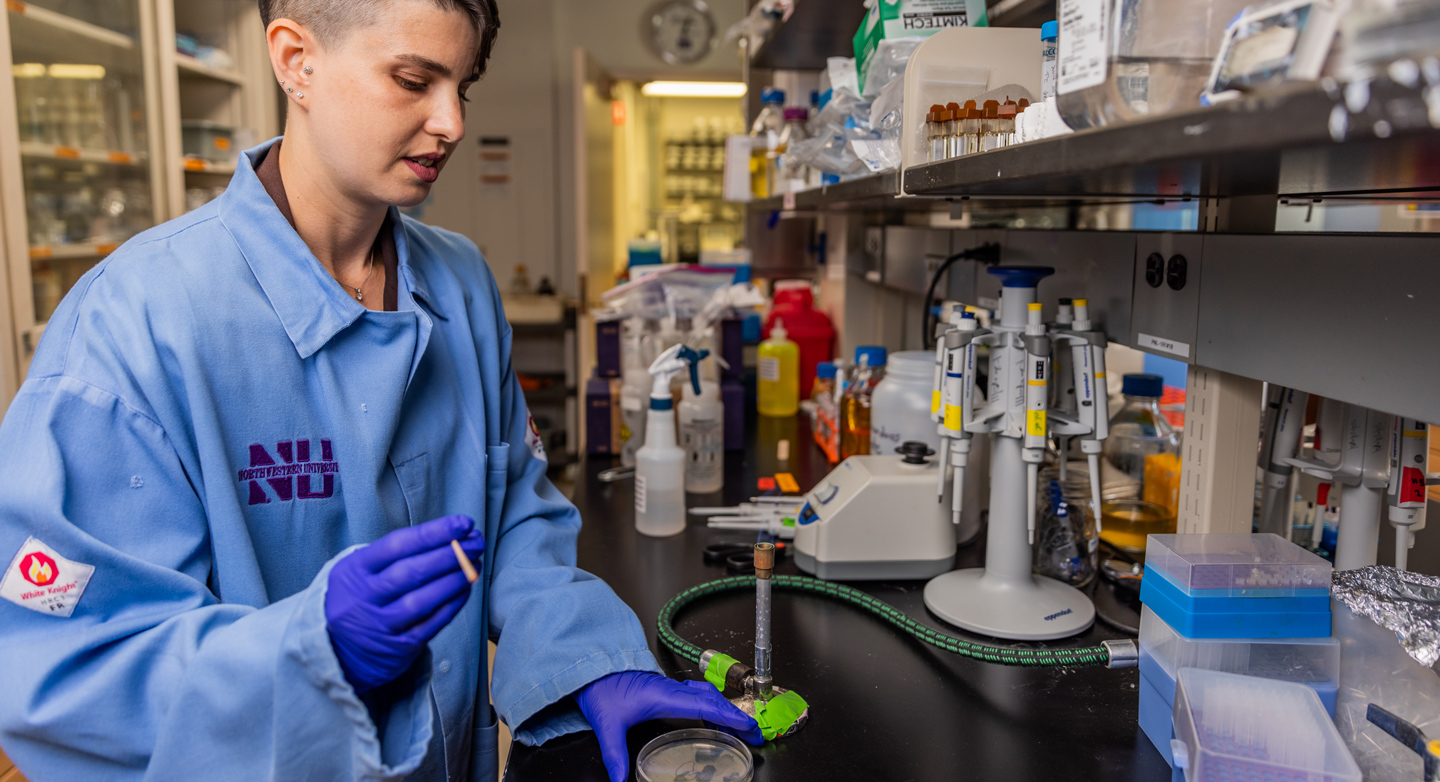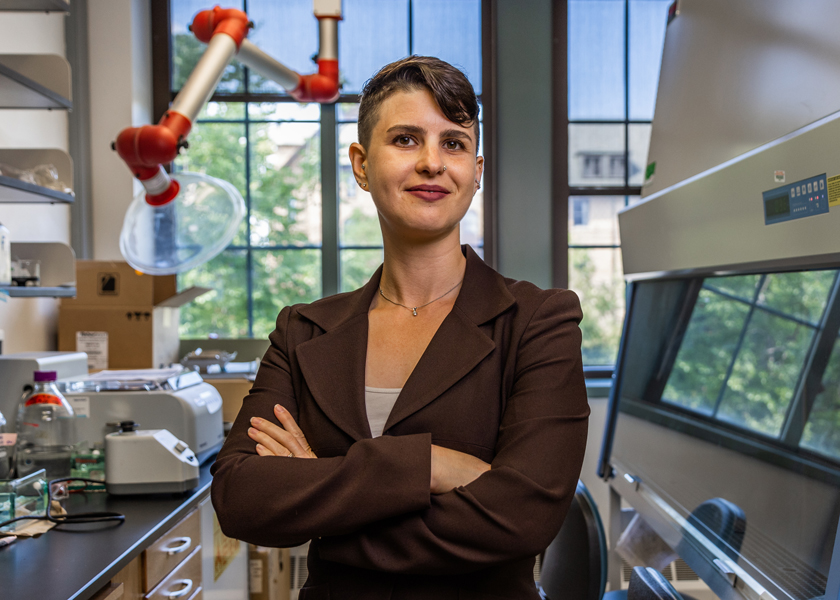How to Clean a Yoga Mat
After you step, sweat, and Savasana all over your yoga mat, clean it. Not only will it spare you from a stinky mat, but it can help protect you from skin infections and other health issues.

As a first-year undergraduate at Johns Hopkins University, Erica Hartmann listened intently as one of her professors delivered a lecture on bioremediation. She recalls being captivated by the idea that microbes could be used to clean up a polluted site by breaking down its environmental contaminants.
“I thought it was just wild that microbes can exist in environments where there’s no oxygen,” she says. “That they can grow in deep-sea thermal vents or by just using the energy from sunlight . . . that they can take chemicals that didn’t exist 50 years ago—chemicals that humans created, which have no place in nature—and given enough time, figure out how to eat them."
Now an associate professor of civil and environmental engineering at the McCormick School of Engineering and an expert on indoor microbiomes, Hartmann remains captivated. “There’s an amazing amount of diversity and possibility in microbiology,” she says.
Today, she’s dedicated to exploring those possibilities, focusing her research on understanding, at the molecular level, how microbial communities respond to man-made chemicals. She then uses that new knowledge to influence practical outcomes, especially for controlling the spread of diseases and pathogens.
Recently, Hartmann has applied her research to the COVID-19 pandemic, examining air filters on airplanes to see whether they have captured the SARS-CoV-2 virus—information that would be valuable in both tracking the spread of the coronavirus and perhaps slowing its progress.
Teaming with a partner airline, Hartmann has learned about the practical constraints of the air sampling process. Air filters are massive. To take one out of a plane for testing, the aircraft must be pulled out of service. To overcome that limitation, Hartmann and the air carrier are seeking alternative methods of air sampling, possibly by using a device that’s easily removed so the airline can avoid the hassle of temporarily grounding the craft.

Because this work has implications beyond COVID-19, Hartmann and her collaborators are investigating how to track a handful of other viruses and bacteria. “COVID-19 is an issue right now,” says Hartmann, “but there are other respiratory pathogens in circulation all the time, and it would be really valuable if we could track lots of other pathogens as well. That would help us know when things are moving around and allow us to prepare.”
One of the end goals of the air filters project, Hartmann says, is to have monitoring data that’s accessible for public officials. This could lead to better decisions to protect our health. Another potential outcome is redesigning ventilation systems in schools, offices, and other enclosed spaces to be more like air filters in airplanes, which are intentionally designed to minimize the threat of airborne illness.
This current work is just one example of what’s happening in Hartmann’s lab. She has applied her passion to such diverse projects as investigating why medicine intended for fish at Shedd Aquarium in Chicago was disappearing in the water (answer: a family of microbes was consuming it) and understanding antimicrobials and the development of antibiotic resistance.
Hartmann notes that sometimes, when microbes face off with an antimicrobial agent, they die. Other times, they evolve and become immune to antimicrobials and subsequently antibiotics.
“It’s very interesting from an environmental perspective,” she says. “We know a lot about the microbes in our bodies and what happens within microbes when we take antibiotics. But what we don’t know a lot about is when we use antimicrobials in our environments, expose those microbes to antimicrobials, and then interact with both the antimicrobials and the microbes around us.”
Thanks to previous interdisciplinary projects with faculty from the Feinberg School of Medicine and the Weinberg College of Arts and Sciences, Hartmann brings a greatly expanded knowledge base to her work. Now, she is using methods such as collecting samples in the field, sequencing DNA, and developing model organisms and bacterial communities to decipher how microbes live and what they’re doing that could impact human beings.
“Instead of medicine thinking about a person in a vacuum,” Hartmann says, “we’re thinking about a person in an environment and everything they’re interacting with.”
Photography by Matthew Allen
After you step, sweat, and Savasana all over your yoga mat, clean it. Not only will it spare you from a stinky mat, but it can help protect you from skin infections and other health issues.
A science-based guide for fellow germaphobes.